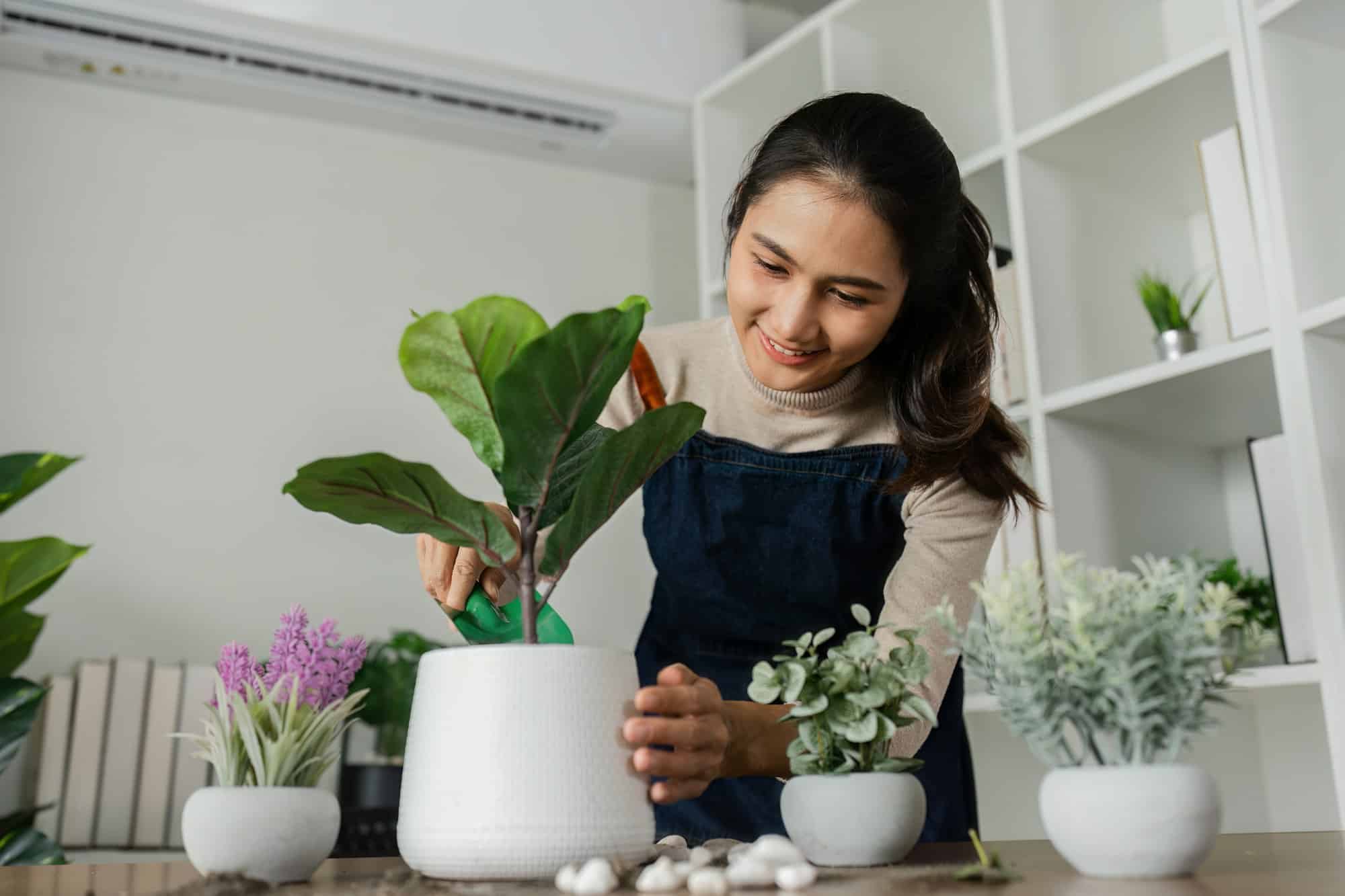What Are the Top Plants for a Low-Light Bathroom Greenery?

Bathrooms usually aren’t the first place that comes to mind when considering the best spots for houseplants. However, your bathroom can provide the perfect environment for certain types of greenery, especially those that thrive in low-light conditions. The unique balance of humidity and indirect light found in many bathrooms is ideal for a surprising number of plant species. With the right information, you can turn your bathroom into a lush, green oasis. Let’s look at some of the top plants that will thrive in a bathroom’s low-light conditions.
The Factors for Success: Light, Water, Soil and Humidity
Understanding the unique conditions of your bathroom is vital in choosing houseplants that will thrive. Bathrooms generally have low, indirect light. While this may not be ideal for many plants, certain species actually prefer these conditions. Look for plants with broad, dark green leaves as they’re better at absorbing light.
In parallel : How Can You Design a Functional and Safe Woodworking Shed in Your Backyard?
Watering frequency and moisture levels also play a significant role. Bathrooms, especially those with showers, can provide a high-humidity environment. This simulates the tropical climates that many low-light plants originate from. However, too much water can cause root rot, so you’ll need to adjust your watering schedule accordingly.
The soil type is another critical factor. Depending on the plant, you might need a fast-draining soil mix to prevent water-logging, or a more moisture-retentive mix for plants that enjoy consistently damp conditions.
Also to discover : What Are the Best Smart Lighting Systems for an Art Collector’s Gallery at Home?
Houseplants That Thrive in Low Light
One of the primary challenges of growing plants in the bathroom is the low light. However, some plants have adapted to grow well in low-light conditions. These are typically plants originating from forest understories, where they received little direct sunlight.
The Snake Plant, or Sansevieria trifasciata, is a prime example. This plant is famed for its hardiness and ability to tolerate low light levels. Its tall, sword-like leaves add a striking element to your bathroom decor.
Another excellent choice is the Pothos, also known as Devil’s Ivy. This plant is a robust vine that can grow in virtually any light conditions, though it does best in indirect light. Its heart-shaped leaves provide a soft, inviting aesthetic.
Moisture-loving Plants
A key characteristic of most bathrooms is the high humidity level, especially after a shower or bath. These conditions mimic the tropical and subtropical environments that many plants originate from, making the bathroom an ideal location for them.
One of the best examples is the Boston Fern. This plant thrives in a high-humidity environment, making the bathroom an ideal location. The delicate, feathery leaves of the fern will provide a soft, lush feeling to your bathroom.
The Peace Lily is another great option. While it prefers bright, indirect light, it can tolerate low-light conditions. However, it does require a high humidity level, making it a perfect fit for the bathroom.
Adapting to Soil and Water Conditions
Even though your bathroom may have the perfect light and humidity conditions for these plants, you’ll still need to ensure that the water and soil conditions are right. Too much or too little water, or the wrong type of soil, can quickly lead to an unhealthy plant.
The Snake Plant is a drought-tolerant species, so it prefers to dry out between watering. Overwatering can lead to root rot, so it’s important to use a well-draining soil mix and be mindful of your watering schedule.
The Pothos, while tolerant of most conditions, prefers a well-draining soil mix as well. It can tolerate being slightly dry, but it will thrive with consistent, moderate watering.
The Boston Fern and Peace Lily both prefer consistently damp soil. Using a moisture-retentive soil mix will help ensure that they don’t dry out. However, be careful not to overwater, as this can also lead to root rot.
Bringing the Green into Your Bathroom
Turning your bathroom into a lush, green oasis can be an exciting and rewarding process. By understanding the unique environment of your bathroom and choosing the right plants, you can create a beautiful, calming space. The Snake Plant, Pothos, Boston Fern, and Peace Lily are all outstanding choices that can thrive in a low-light bathroom. With a bit of care and attention to watering and soil conditions, they will provide a vibrant, green environment that brings a touch of nature into your home. By incorporating these plants into your bathroom, you’ll be cultivating not just greenery, but also a sense of peace and tranquility.
Choosing the Best Potting Mix for Bathroom Plants
Selecting the right potting mix for your bathroom plants is just as crucial as understanding their light, water, and humidity requirements. The potting mix plays a significant role in providing the necessary nutrients and ensuring proper drainage, both of which are critical factors for a plant’s growth and survival.
Snake Plant and Pothos both prefer a well-draining soil mix. This soil type allows water to pass through quickly, which is essential for these drought-tolerant plants because they prefer to dry out between watering. A well-draining potting mix usually consists of a combination of peat moss, perlite or pumice, and compost or bark nuggets.
On the other hand, Boston Fern and Peace Lily favor a more moisture-retentive soil mix. This type of potting mix holds onto water longer, keeping the soil consistently damp which these plants prefer. A typical moisture-retentive mix might contain peat moss, coir, vermiculite, and compost. It’s important to note that while these plants enjoy moist soil, overwatering can still cause root rot, so ensuring a balance is key.
While these are the general potting mix preferences of these plants, it’s essential to monitor your plants’ health and adjust the soil mix as needed. If a plant’s leaves start turning yellow or brown or if the plant seems generally unhealthy, it might be time to assess if the current soil mix is suitable for the plant’s specific needs.
Conclusion: Creating a Lush, Green Sanctuary
Bathrooms might not be the first place that comes to mind when thinking about houseplants, but they can offer an ideal environment for a variety of greenery. With their unique balance of low light conditions and high humidity levels, bathrooms can emulate the natural habitats of several indoor plants. The key is choosing the right ones, like the Snake Plant, Pothos, Boston Fern, and Peace Lily, which all thrive under these conditions.
Yet, it’s not just about placing a plant in the bathroom and hoping for the best. Careful attention must be paid to their specific needs, from the type of light they prefer, whether it’s low light or bright indirect light, to their water and soil requirements.
Choosing the right potting mix, for instance, can mean the difference between a plant that thrives and one that merely survives. It’s important to match the potting mix to the plant’s natural habitat, whether that means using well-drained soil for drought-tolerant plants like Snake Plant and Pothos, or a moisture-retentive mix for humidity-loving ones like Boston Fern and Peace Lily.
With a bit of effort, you can transform your bathroom into a lush, green sanctuary that not only adds beauty to your home but also serves as a calming retreat. So why not give bathroom gardening a try? You might be surprised at how much joy these small pieces of nature can bring into your everyday life.
